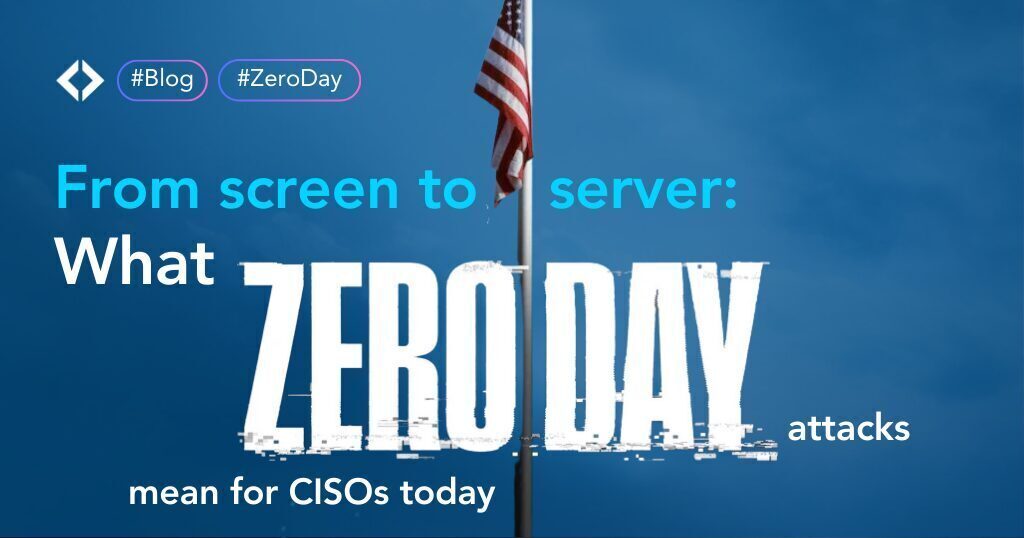In the latest Netflix series, the President of the United States — played by Robert De Niro — faces a devastating Zero-Day attack that threatens national security. While it may seem thrilling on screen, Zero-Day attacks are, in reality, extremely dangerous threats.
Not only can they have major consequences for organizations, but they have also become an increasingly widespread threat. Their numbers continue to rise, and with the rise of artificial intelligence and machine learning, defending against them is becoming even more difficult. Attackers can now automate and adapt their strategies in real-time.
In 2021, a Zero-Day attack targeted Microsoft Exchange Server, used by millions of businesses. Multiple Zero-Day vulnerabilities were exploited to attack email accounts while installing malware. As a result, the data of thousands of companies was stolen, severely disrupting their operations.
In this article, we explain how these attacks work and what strategies you can implement to protect yourself.
I. What are Zero-Day attacks?
The term zero-day attack is used when an attacker takes advantage of a vulnerability that hasn’t be discovered yet. The vulnerability can be in software or hardware. Since the vulnerability hasn’t been discovered yet, no patch has been developed for it. Hence the name zero-day attack: the developer has had zero days to patch it.
There isn’t just one type of zero-day attack. They can take many forms (malware, viruses, worms…) that vary intensity and in the way they operate once they are in their target. What characterizes a zero-day attack is the exploit of the vulnerability, not its form.
Zero-day attacks are particularly dangerous since attackers have all the advantage. The vulnerability hasn’t been discovered yet, so the attack comes as a complete surprise to the victim. And, with no patch to fix the vulnerability, the impact can be considerable for the target.
Especially depending on how long it takes before anyone even realizes that there is a problem: they can go unnoticed for long periods of time since they are so hard to detect. This is particularly true if the victim uses traditional cybersecurity solutions (like antiviruses) as they rely on exclusively known threats.
II. How they work?
Zero-day attacks start the moment the hacker has found an unknown vulnerability to exploit.
The attack will usually target critical parts of the victim’s hardware or software: web browsers, operating systems, applications… The hacker will create or use an exploit to take advantage of the vulnerability.
The exploit, called zero-day exploit, can take any form and be as complex as needed to exploit the vulnerability: from simple codes and phishing attempts, to remote code execution or privilege escalation…The attack then goes on for as long as needed, and, unfortunately, for as long as the vulnerability isn’t discovered. Some threats can stay unnoticed in the victim’s system for a long time, hence the severity of some Zero-Day attacks. The attack stops either when the hacker has reached his goal or when the unusual activity has been detected.
III. Steps to prevent zero-day attacks
The first cybersecurity strategy to apply when it comes to zero-day attacks is finding ways to prevent them. Since no one can predict which vulnerability will occur, all avoidable weaknesses must be addressed. Here are some measures that can be taken:
- Update all your software regularly and automatically to get the latest patches
- Ensure a rigorous network segmentation: divide your network into small, isolate segments to limit the impact of potential zero-day attacks
- Make regular security audits to find any possible entry points to your organization
- Have a thorough back-up strategy in case the attack takes the form of a ransomware, for example
- Ensure employee training to avoid human errors as much as possible
By implementing these crucial, but simple, steps you will significantly reduce potential weaknesses in your IT infrastructure, thus reducing potential zero-day attacks. However, these steps alone aren’t enough to keep your organization safe. A robust, multi-layered cybersecurity is vital to protect you against zero-day attacks – or any other type of threat.
IV. Proactive cybersecurity tools to protect you
While the vulnerabilities that will be exploited for a zero-day attack are unknown, cybersecurity tools exist that can help you develop a proactive defense strategy against these attacks.
Advanced threat detection tools are an essential part of this. Endpoint Detection and Response (EDR) solutions are capable of detecting threats that are yet unknown. Their concept is fairly easy: these tools constantly monitor your IT infrastructure to detect any unusual behavior. If something unusual happens – which is the case when a vulnerability is exploited – it will be noticed. Once the threat is detected, an EDR is then capable of neutralizing it in real-time, effectively protecting your infrastructure.
What differentiates EDRs is the precision in their detection of unusual behaviors. EDRs that have integrated with AI, machine learning, and behavioral analysis take the cybersecurity to the next level. By incorporating and leveraging these technologies, EDRs learn from ongoing activities, detect patterns, and identify new or unknown attacks that would otherwise go unnoticed. This is how TEHTRIS EDR works: it leverages our own AI, CYBERIA, to provide you with a robust defense against zero-day attacks and any other threat.
Additionally, Deceptive Response solutions are becoming increasingly necessary as part of a proactive cybersecurity strategy. These tools create fake resources, called decoys, placed on your networks. By interacting with one of the decoys, threat actors make their presence known and the attack can be avoided. This is especially useful for zero-day attacks, as it works even if the vulnerability that has been exploited is unknown.
TEHTRIS has created its own Deceptive Response solutions that provides you with crucial insights, prevents future attacks, and strengthen your overall cybersecurity posture.

